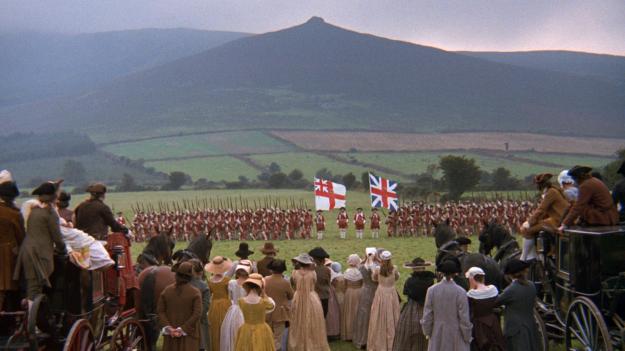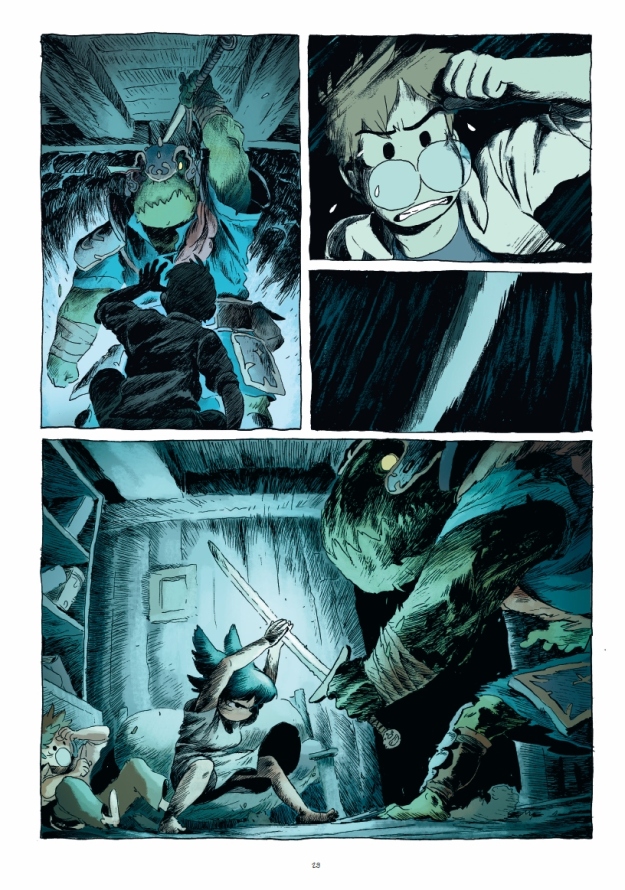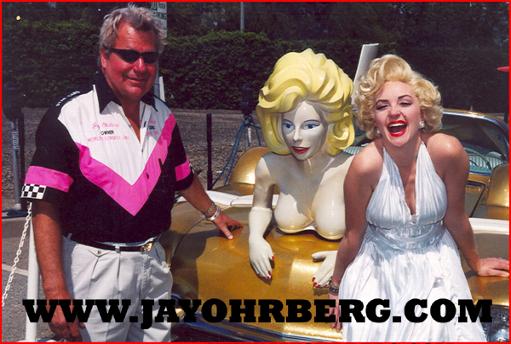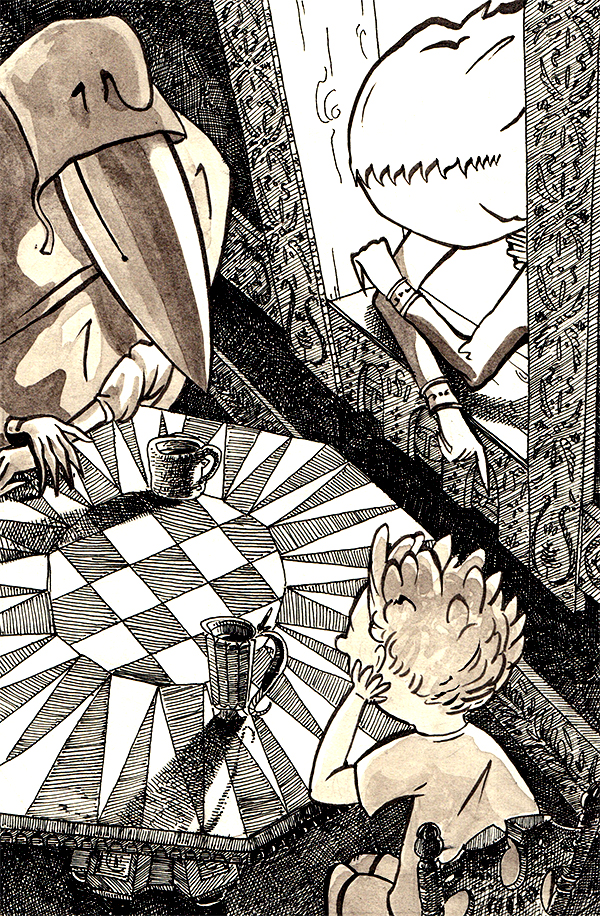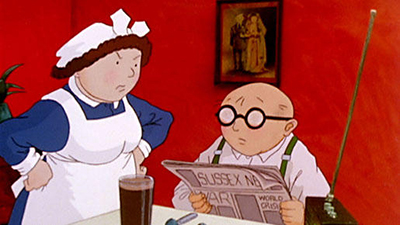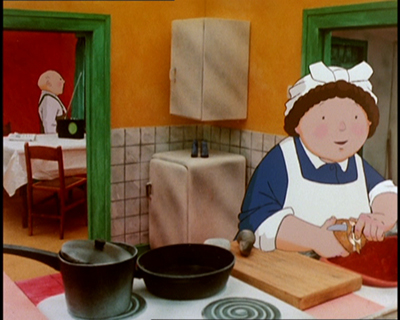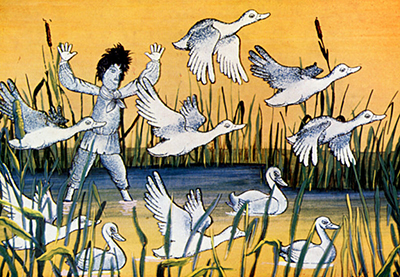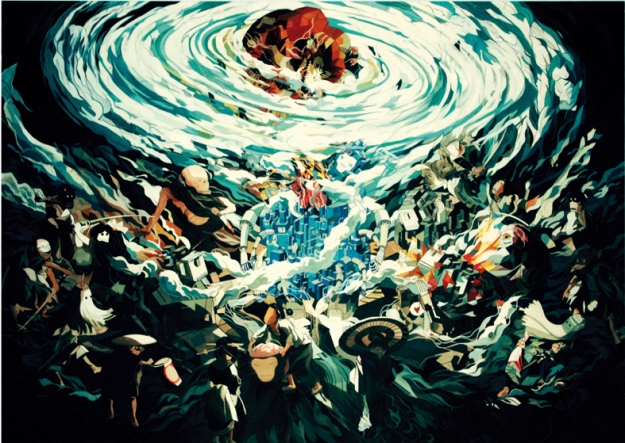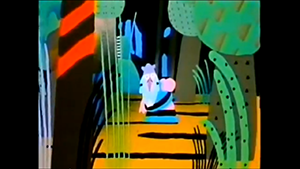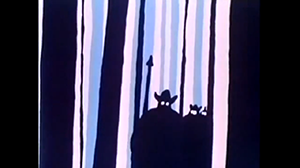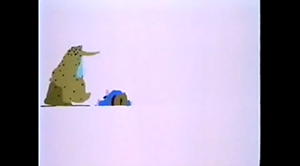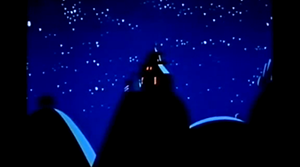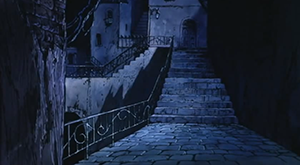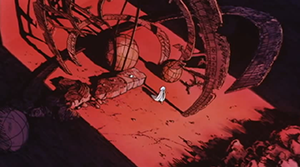This post was a long time coming, but here it is, finally: some brief thoughts on legendary director, Akira Kurosawa.
My favorite of his films, from a narrow sampling, is Dreams (1990). It’s an anthology of separate shorts. Each of its parts shares a little common ground with the other, and all have the same ghost-story texture.
There is a trail of distinctive trademarks in some of the best Japanese films; things like strong composition, natural weather as part of a scene, and unconventional use of color. If you follow the trail far enough, it will almost invariably lead you back to Akira Kurosawa.
I could try to talk about any one of Kurosawa’s “style things”, but let’s focus on color for a bit. I’ve taken frames from Akira Kurosawa’s Dreams, and added a quick color analysis.
We’ll begin with the anthology’s second segment, The Peach Orchard. Don’t read any further if you want to avoid spoilers.
The story opens with a young boy, whose family has chopped down their ancestral peach tree. After examining his sister’s shelf full of dolls, the boy follows a girl dressed in peach-blossom pink into a dark forest.

Kurosawa often attached colors to his characters. The girl, symbolizing the spirit of a felled peach tree, is in pink (not shown in the frame above). The boy is dressed in lavender. Both characters are initially set against a background of dark greens, patchy sunlight, and other earthy tones- the forest is deep, dark, and mysterious.
At first, we only catch brief glances of pink as the boy pursues the girl. But then he arrives at a slight clearing in the forest.
Suddenly, the boy and girl face each other. There is a little more light shining through the lavender fog. Now, pink flowers are scattered on the ground. Kurosawa has linked the girl’s character both with the peach blossoms and with the forest environment, using color.
The girl darts away into the forest’s darkness. The boy follows.
Emerging from the shade of the trees, the boy finds himself facing a terraced hillside, where all the trees have been mercilessly hacked down. Standing in the place of the fallen trees are his sister’s dolls, come to life. The dolls perform a ritual dance.
I don’t really have anything to say about the colors in this scene, but I think they’re really nice. The Peach Tree sets an early precedent for the use of color in this anthology.
I’d also like to highlight the colors in the segment: The Crows. Named after Van Gogh’s final painting, it follows a student who meets the famous painter (played by Martin Scorsese), and then follows him through a landscape of oil masterpieces.
It’s a huge pleasure to see Van Gogh’s paintings come to life in this way.
One of my favorite shorts from this collection is The Tunnel, for its sheer evocative power.
The Tunnel opens with a military-looking man on a road at dusk. He is approached by a savage dog, and retreats into the blackness of the tunnel. As he comes out on the other side, we get to see the beautifully graphical shot below:
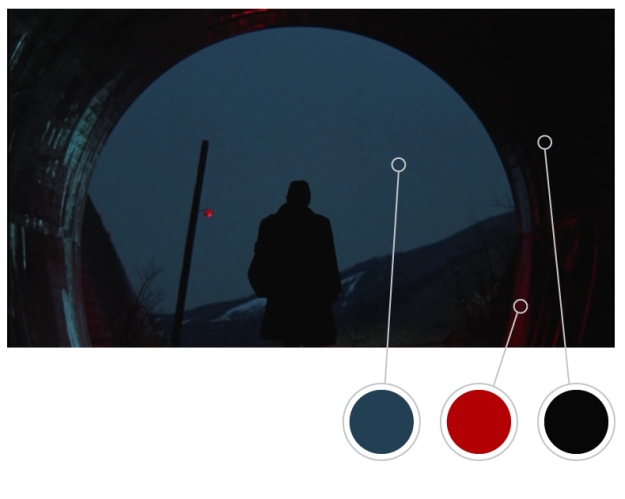
Melancholy abounds in this landscape of slate blues and blacks. After sensing an undercurrent of menace with the dog, we’re ready to see something frightening. And Akira Kurosawa delivers.
A platoon of dead soldiers marches out of the tunnel towards their commander, the military man.
How do you show an army of the dead? Do you have them staggering around like zombies, with patches of skin falling from their ribs? Do you make them skeletons?
Kurosawa put them in tight ranks, and made them blue.
They feel cold, alien, and out-of-touch with human life. As their story unfolds, the audience feels a sympathy for these fallen soldiers that would not have been possible had they been zombies, skeletons, or see-through ghosts.
As frightening as the dead platoon is, The Tunnel isn’t the most chilling story that Dreams has to offer. Let’s talk about The Weeping Demon.
Like The Peach Orchard, The Weeping Demon features a shade of pink- but this time, the pink is the weak glow of the setting sun, through smog induced by a massive nuclear meltdown. Our main character is a man in tattered clothing, wandering through the vast waste alone.
In his travels through the irradiated waste, the man encounters a creature with a single horn in his forehead- a demon who is being punished for sins that he committed before the meltdown. We learn that after nightfall, the horn causes the demon great pain.
We see the pink again, much darker, in a filthy scarf slung around the demon’s neck. We also come across some massive mutated dandelions.
The demon leads our hero to a ledge where they can look down into a deep valley.
Now the pink is back with a vengeance, the bloody centerpiece of a hellish scene. A crowd of demons huddles around three small pools of venomous water, screaming in pain and clutching their horns. The one-horned demon explains that many of them were executives and entrepreneurs- some of the very people who allowed the nuclear meltdown to occur.
This is the judgment that Kurosawa doles out on businessmen and engineers responsible for polluting the earth, and he gets it across using the color pink. That’s amazing.


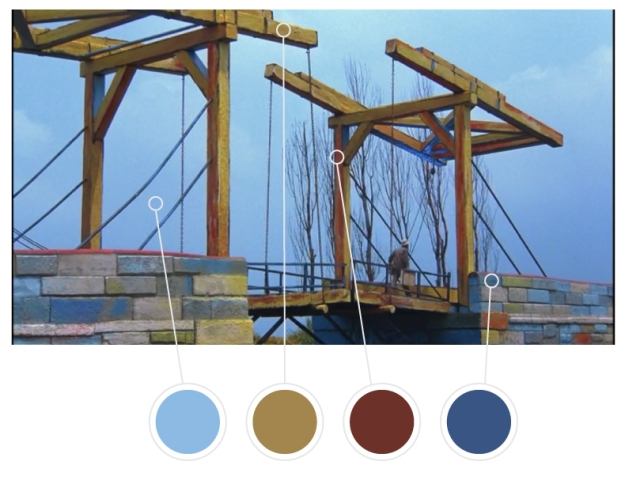












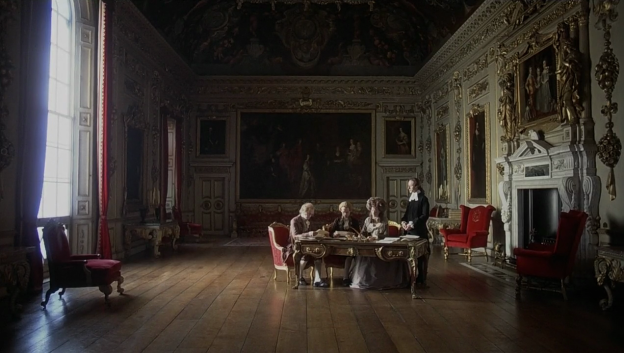
 Barry Lyndon, 1975
Barry Lyndon, 1975

